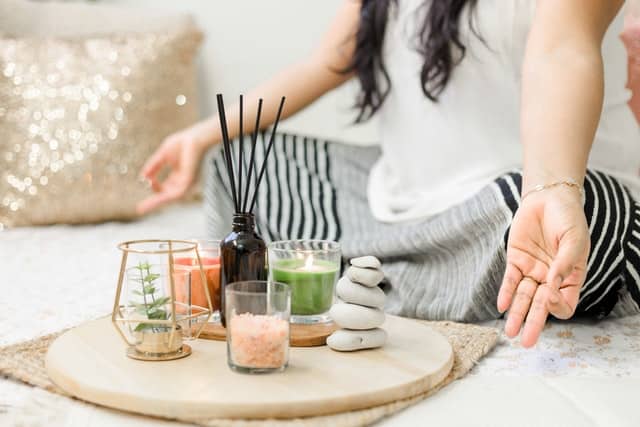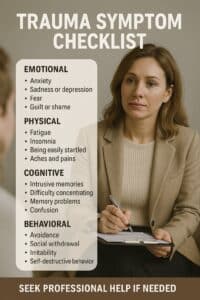According to the Anxiety and Depression Association of America, anxiety disorders are the most common mental illness in America, affecting about 40 million American adults each year. Despite being prevalent in almost 20% of the adult population, only around 37% of those that suffer from anxiety are treated. We recognize that this is likely due to the vast economic and societal barriers to mental health services that are present in the United States. As licensed psychologists that specialize in treating anxiety disorders, we want to use our platform to teach you about five anxiety relief exercises you can turn to in times of need.
Tips for anxiety relief
- Diaphragmatic breathing
Diaphragmatic breathing, or belly breathing, is an anxiety relief exercise that aims to fill the lungs more effectively. The diaphragm sits below the lungs and aids in the process of moving air in and out of the lungs. Normal breaths are typically quite shallow and do not fully engage the diaphragm. Diaphragmatic breaths, on the other hand, are deep breaths that expand and collapse in your stomach rather than your chest.
Here is how to do it: sit down, relax your body, and put one hand on your chest and the other on your stomach. Breathe in slowly through your nose, then purse your lips and exhale slowly while your stomach contracts. You want to make sure your belly is filling with air each time you do it.
Diaphragmatic breathing is an effective anxiety relief exercise, as a 2017 study showed that this breathing technique lowers stress and cortisol levels. Diaphragmatic breathing slows down your breathing rate, heart rate, and blood pressure which are usually elevated in anxiety-inducing situations. Try following this short guided diaphragmatic breathing video to get you accustomed to the exercise.

- Progressive muscle relaxation
If you have 15 minutes and a bit of space around you, progressive muscle relaxation is an effective exercise for anxiety relief. This exercise is done through a series of tensing and relaxing of each muscle group in your body. Here a step by step of how to perform progressive muscle relaxation:
- Slowly inhale while you tense one muscle group for about 10 seconds. Exhale, and quickly release the tension from that muscle group. A good place to start is with the muscles in your face.
- Briefly rest and then repeat with the following muscle group, working your way down your body.
- As you release the tension from each muscle group, be mindful of how your muscles feel when they are tense and when they are relaxed. It may be helpful to imagine the anxiety releasing itself from your body as you release the tension from your muscles.
Not only is progressive muscle relaxation an effective anxiety relief exercise, but it can aid with insomnia and sleeping trouble as well. We recommend starting out with a guided progressive muscle relaxation until you get comfortable with the exercise.
- Guided imagery
Another common anxiety relief exercise is guided imagery. This exercise involves using a visualization technique to move away from anxious thoughts and feelings with more positive, tranquil ones. Simply close your eyes, imagine a place that relaxes you, and use all your senses to transport yourself to that place.
A common place to visualize for anxiety relief is a tropical beach. Slow your breath, release any tension in your body, and immerse yourself in the visualization. Feel the hot sand underneath your toes, hear the crashing waves hitting the shore, smell the sweet sunscreen on your skin, and look out into the turquoise waters. Spend as much time here as you need, and when you are ready, open your eyes again. If the beach scene does not feel right for you, feel free to visualize any place that brings you peace and serenity. Some people will think of a safe or comforting place in their life to use as an image.
- 5-4-3-2-1 grounding exercise
In times when you don’t have a moment to yourself to use guided imagery or progressive muscle relaxation, the 5-4-3-2-1 grounding exercise is an excellent anxiety relief tool to try. You first identify five things you can see. This can be anything from a computer, to a pen, to the tree outside of your window. Next, identify four things you can touch. Perhaps it’s the hair on your head, the chair beneath you, or a pillow beside you. Then, identify three things you can hear. Turn your attention to external sounds like a car speeding past, or a clock ticking. Next, identify two things you can smell. If you are in an environment without any distinct smells, try opening up a window or door to allow new aromas to enter. Lastly, identify one thing you can taste. If your morning coffee has already left your tastebuds, try popping gum or a mint in your mouth. Repeat the exercise as many times as you need.
The goal of this exercise is to make you present in the moment and provide relief from anxious and intrusive thoughts. Try pairing the 5-4-3-2-1 exercise with diaphragmatic breathing to further encourage relaxation and mindfulness.
- Vagus nerve stimulation
An item most of us have in our home, ice or an ice pack, can be incredibly helpful when it comes to anxiety. This tool is particularly helpful if we are feeling very overwhelmed with stress or anxiety and are not able to think clearly. The vagus nerve is the main component of your body’s parasympathetic nervous system which controls involuntary functions such as heart rate and digestion. Stimulating the vagus nerve with ice or a cold compress can act like a reset button for your brain and body. The sudden jolt of the cold serves as a distraction from the anxiety while simultaneously slowing down your heart rate, ultimately leaving you feeling calmer and more at ease.
There are many ways you can perform this anxiety relief exercise such as dunking your face in a bowl of ice water for 15 to 30 seconds or applying ice to the back of your neck or holding ice in your hands. Try out each variation to see what works best for you and your needs. Please note that this exercise might not be suitable for people who are prone to migraines or have certain heart conditions. Also, if you are using an ice pack, make sure to wrap it with something like a paper towel. As always, consult your doctor to make sure this anxiety relief technique is right for you.
Takeaway on how to reduce anxiety
Anxiety affects nearly everyone at one point or another. You are not alone. We hope that these five anxiety relief exercises help you whenever you are in a stressful or overwhelming situation. Please remember that while these exercises may provide temporary relief from anxiety, they are not treatments for anxiety disorders. If you think you may benefit from therapy for anxiety, please reach out to schedule a free consultation with one of our licensed psychologists.
– Than you Rumi Petrovia, Best Within You Therapy & Wellness Intern
















